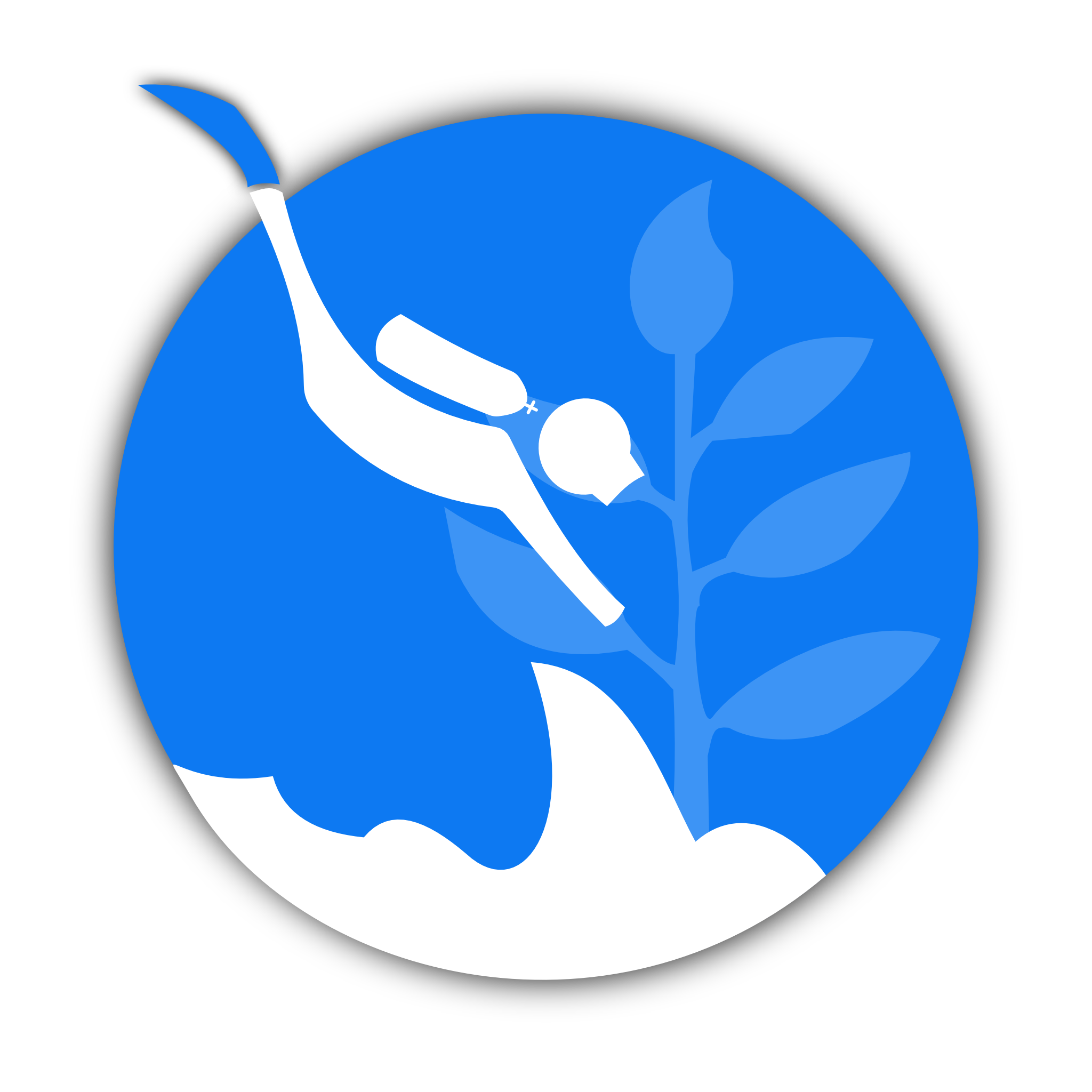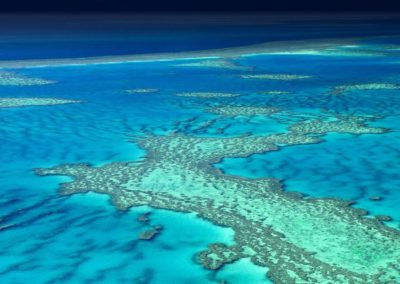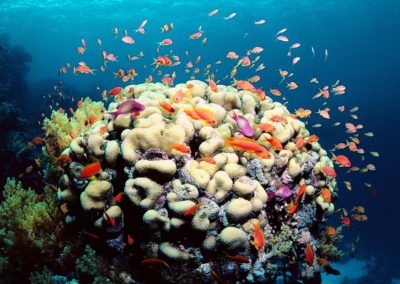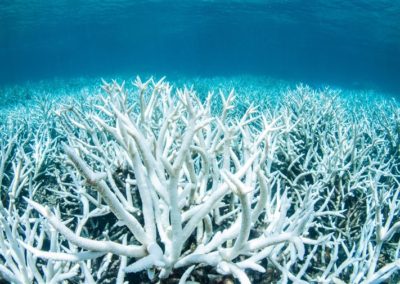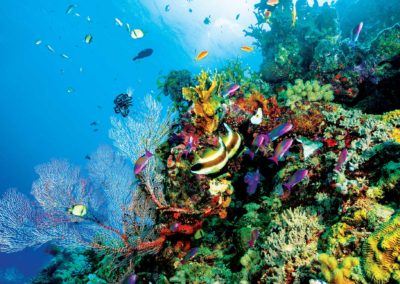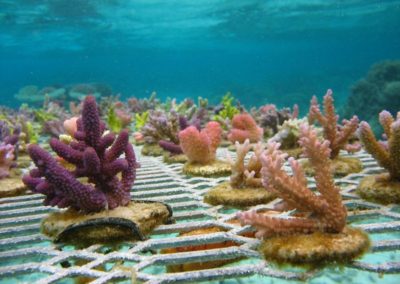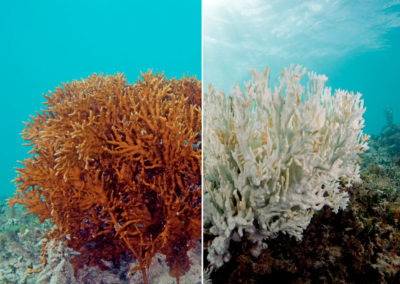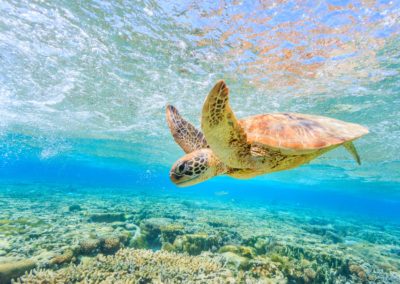Located off the coast of Queensland, Australia in the Coral Sea, the Great Barrier Reef is the largest reef system in the world, stretching 2,300 kilometers. With its thousands of species roaming beneath the crystal clear waters, it is no doubt one of the world’s seven natural wonders.
The Great Barrier Reef is the largest living organism on the planet. The reef is a combination of formations going back as far as 20 million years ago, with the most recent formations being 6000-8000 years ago after the last Ice Age. The reef is composed of different layers of corals built on top of each other due to years of fluctuating water levels and the movement of the Earth’s crust. The original layer of corals was formed on the Great Dividing Range which fell beneath sea level after the glaciers of the Ice Age melted. Corals had been growing on the base of the mountains and eventually with the melting ice and glaciers, these mountains became completely submerged, leaving behind some barrier reefs that would be the beginning of the Great Barrier Reef.
The Great Barrier Reef is now a system composed of 2,900 individual reefs and 900 islands. It consists of 1,625 species of fish, 600 species of corals , 133 species of sharks and rays, and 6 species of sea turtles. It’s a whole world of its own, just lurking beneath the surface.
Due to its stunning qualities, the Great Barrier Reef has become a major tourist attraction. People from all over the world come to visit the reefs and islands. You can scuba dive deep beneath the surface to swim along the reefs and join the turtles, sharks, and fish as they swarm the ocean floor or experience the vivid colors from above as you snorkel in the crystal clear waters. Even the islands have a lot to offer, from sailing to skydiving, it’s impossible to be bored when you come to the Great Barrier Reef.
BUT before you get too excited, there are some serious matters that need to be known and discussed. Due to so many people coming to the reefs, and so many people being careless, a lot of the organisms are being negatively impacted. Pollution and coral bleaching are the biggest problems. Pollution coming from individuals and oil rigs, tankers, etc. And climate change, coming from anthropogenic activities, which is causing coral bleaching. Coral bleaching is when water temperatures get too high or too low causing the algae in corals to basically get stressed out and run away. The algae are what give each coral their color and are their food source, so when these algae leave the corals lose their color and their food. After being vulnerable for too long, the corals begin to die. A direct indicator of coral bleaching is when corals go white. Coral bleaching is the number once cause of destruction in coral reefs and back in 2002 the Great Barrier Reef experience a major bleaching event that caused 54% of the corals to be bleached.
Many acts and foundations have been put into place to protect this reef but it’s not enough, climate change doesn’t come from tourists visiting the reef, it comes from industries and factories and businesses around the world that don’t care about the environment. There is the Great Barrier Reef Marine Park that helps conserve the organisms in the reef, the Reef 2050 Long-Term Sustainability Plan, the Reef Trust, and more, that work together to sustain the reef. Some are even helping by creating underwater nurseries where they take damaged or young coral, put them in these nurseries and help them grow until they are ready to be replanted. Help Australia out, help the animals and the ocean out by doing whatever you can to stop polluting and slow climate change down at home. Even if you know that what you are doing won’t change climate change, anything will help. Even the slightest thing like recycling.
Climate change is the cause of coral bleaching and we, humans, are the cause of climate change. So, if you ever want the chance to see, or ever want your kids or grandkids to experience the fascinating, as mesmerizing, and insanely cool world of the Great Barrier Reef, then we need to work together to reverse climate change.
Fun Facts
– The Great Barrier reef is home to 1/3 of the world’s soft coral.
– It is larger than the Great Wall of China.
– It is visible from space.
– It became a World Heritage site back in 1981.
– 10% of the world’s fish species inhabit the reef.
– The Great Barrier Reef covers an overall area that is larger than the size of Italy.
